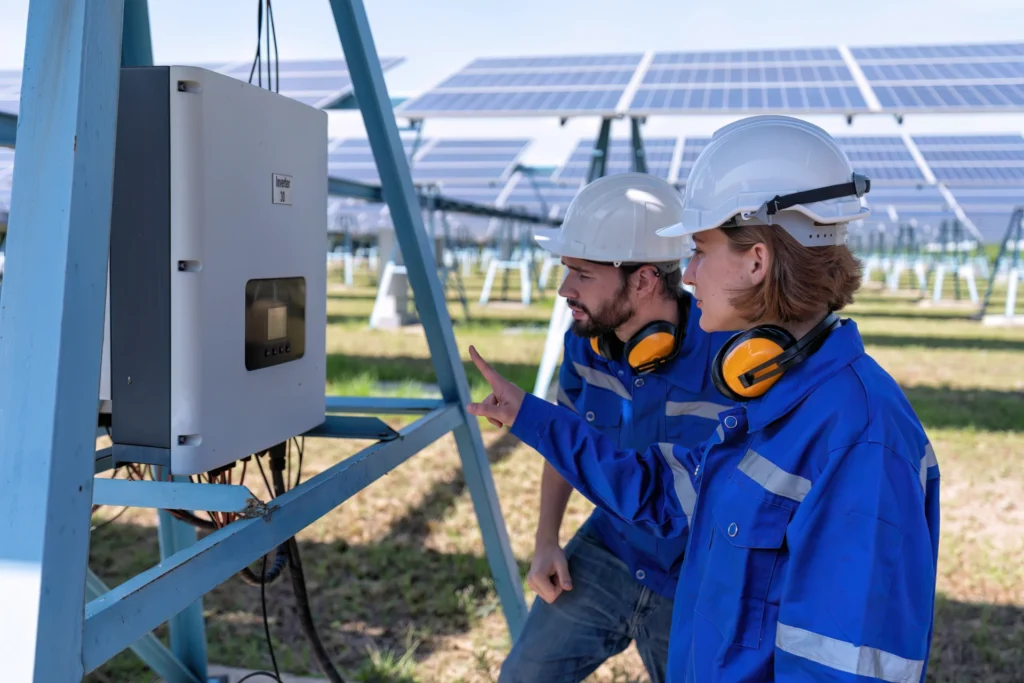
Solar energy is becoming increasingly popular as a source of renewable energy. With the rise in demand for solar power systems, it is important to consider the lifespan of the various components used in these systems, such as solar inverters. Solar inverters are integral parts of solar power systems that convert DC electricity generated by solar panels into usable AC electricity for homes and businesses. The lifespan of a solar inverter is an important consideration when investing in a solar power system, as it can significantly impact the overall cost and efficiency of the system.
This article will explore what exactly a solar inverter is and its importance within a solar power system. We will also discuss the factors that affect the lifespan of a solar inverter, typical lifespans for different models, and how to determine the expected lifespan of your inverter. Additionally, we will provide maintenance tips to help extend your inverter’s lifespan and maximize your investment. Understanding these key aspects enables you to make informed decisions when purchasing or maintaining your solar power system.
The efficacy and reliability of solar energy systems depend heavily on the performance and durability of a key component responsible for converting DC to AC power – the solar inverter. This device is an essential part of any solar power system, as it transforms the direct current (DC) electricity generated by solar panels into alternating current (AC) electricity that can be used to power appliances and homes.
The importance of a high-quality solar inverter cannot be overstated. A well-functioning inverter ensures that your solar panels generate maximum power output, which translates into greater energy savings and reduced reliance on grid-supplied electricity. Furthermore, inverters help regulate voltage levels and prevent the overloading or underperforming of the electrical system.
One of the most significant benefits of using a high-quality solar inverter is its durability. While many inverters come with an expected lifespan of 10-15 years, some manufacturers offer up to 25 years of warranties. Investing in a reliable inverter that lasts for decades means fewer maintenance costs and more significant long-term savings.
In conclusion, investing in a quality solar inverter is essential for maximizing the efficiency and effectiveness of your solar energy system. Benefits such as greater energy savings, reduced reliance on grid-supplied electricity, regulated voltage levels, and longevity make it clear why choosing a durable and reliable inverter should not be overlooked when designing your home’s renewable energy plan.
A solar inverter is an electronic device that plays a crucial role in the functioning of a solar energy system. It converts the direct current (DC) generated by solar panels into alternating current (AC), which can be used to power household appliances and feed back into the grid. This DC-to-AC conversion is necessary because most electrical appliances operate on AC, whereas solar panels generate DC electricity.
Solar energy systems rely heavily on properly functioning their electronic components, such as the solar inverter, which is responsible for converting DC power to AC power. The solar inverter plays a crucial role in ensuring that the electricity generated by solar panels is used for various applications. It converts the direct current (DC) produced by solar modules into alternating current (AC), used to power household and commercial appliances.
To ensure that a solar energy system operates efficiently, it is essential to maintain and optimize its components frequently. Inverter maintenance techniques can significantly impact overall system performance and extend its lifespan. Proper maintenance includes:
By implementing these measures, users can prevent common issues like overheating or component failure caused by environmental factors like humidity or temperature fluctuations. Ultimately, effective maintenance leads to improved solar inverter efficiency and longer life expectancy of the overall system.
Efficient direct current (DC) conversion to alternating current (AC) is a crucial aspect of solar energy systems. The inverter plays a key role in this process, as it converts the DC power generated by solar panels into AC power that can be used to run household appliances and feed back into the grid. Inverter efficiency is critical for maintaining optimal system performance and maximizing energy output.
An important consideration when selecting an inverter is its efficiency compared with other models on the market. Higher efficiency means less energy loss during conversion, resulting in greater output and lower operating costs. In addition, proper inverter sizing is crucial for ensuring that it can handle the maximum expected load while avoiding overload or underutilization. By understanding these factors and choosing a high-efficiency, properly sized inverter, homeowners can optimize their solar energy system’s performance and maximize its lifespan.
• Efficiency comparison between different inverters
• Proper sizing of inverters for maximum load handling
• Importance of high efficiency for minimizing energy loss
Various factors play a significant role in determining the durability and operational efficiency of the equipment that converts DC power from solar panels into AC electricity for home or commercial use. Solar inverters are no exception, and several variables, such as climate, usage, maintenance, and manufacturing quality can impact their lifespan. The longevity of an inverter depends on how well it is maintained, along with the conditions under which it operates.
The climate is one of the most critical factors impacting solar inverter lifespan since extreme temperatures can cause damage to electronic components. In areas where temperature fluctuations are common, solar inverters may experience thermal stress leading to premature failure. Usage also plays a vital role in determining solar inverter lifespan as frequent starting and stopping an inverter puts additional strain on its internal components.
Maintenance is another crucial factor that impacts solar inverter longevity, and regular cleaning and monitoring can significantly extend its life expectancy. Dust accumulation on the surface of an inverter’s heat sink impedes proper airflow, leading to overheating that can considerably reduce a unit’s lifespan. Additionally, regular checks for loose connections and other signs of wear-and-tear help prevent catastrophic failures that could result from component failure.
The manufacturing quality is also a crucial factor affecting the expected lifespan of a solar inverter. Inverters built with high-quality materials tend to last longer than those made with lower-grade materials since they are less susceptible to corrosion or other forms of degradation over time. Choosing reliable brands when selecting your solar equipment is essential since this reduces repair costs while ensuring optimal performance throughout its lifetime.
The durability of the equipment used for converting DC power into AC electricity is subject to various factors, including climate, usage, maintenance, and manufacturing quality. Understanding the typical operational lifespan of this equipment can help users make informed decisions about their investments. Solar inverters are an essential component of any solar energy system, which makes it necessary to understand how long they last.
On average, solar inverters have a lifespan ranging from 10 to 15 years. However, most manufacturers offer warranties that range between 5 to 10 years for these devices. The factors affecting inverter longevity include operating conditions such as temperature, humidity levels, and exposure to dust or debris. It is worth noting that the better the environmental conditions are maintained around the inverter and its components, the longer it will last.
Solar inverter maintenance ensures they live up to their expected lifespan. Regular cleaning of air filters and monitoring fans’ performance helps improve heat dissipation and prevent overheating issues that could reduce their overall efficiency over time. In addition, routine inspection by qualified technicians can identify potential issues before they cause significant damage or failure.
Signs of an aging inverter may include poor performance or the complete shutdown of your solar energy system. Other symptoms may include strange noises, such as buzzing sounds from your panels, or unusual behavior exhibited by your PV monitoring software indicating errors with your system’s output data readings.
In conclusion, while many factors influence a solar inverter’s life expectancy, regular maintenance practices can help extend its life beyond its manufacturer’s warranty period. Observing signs of aging early on and taking appropriate action promptly could save you money by preventing costly repairs or replacements for your entire solar panel setup if left unchecked for too long without attention paid to them beforehand.
This section delves into advanced models of the device responsible for converting DC power to AC electricity, providing readers with insightful information on high-end inverter technology. High-end inverters have features that outperform traditional models, making them more efficient and reliable. One of the advanced features is multi-power point tracking (MPPT), which allows inverters to operate at their maximum output even when multiple strings of solar panels are connected to them. This feature ensures that a high-end inverter can work optimally regardless of the shading or orientation of individual panels.
Another feature that makes high-end inverters stand out is their ability to communicate with other devices seamlessly. Through wireless communication protocols such as Wi-Fi or Bluetooth, these inverters can transmit data about system performance in real time, allowing homeowners or installers to monitor energy production easily. Furthermore, some models have built-in monitoring tools that provide users with detailed information about energy consumption patterns and system efficiency.
Despite being more expensive than traditional inverters, high-end models are cost-effective in the long run due to their durability and reliability. They have a longer lifespan than standard inverters and require minimal maintenance throughout their lifetime. Additionally, they come with extended warranties and technical support from manufacturers, making it easier for customers to get assistance if any issues arise during installation or operation.
In summary, modern-day technological advancements have led to development of sophisticated solar panel inverters known as high-end models. These devices feature MPPT capabilities that allow them to work efficiently despite external factors such as shading or orientation of individual panels. High-end inverters also boast seamless communication through wireless protocols such as Wi-Fi or Bluetooth and offer extensive monitoring tools for easy energy management by users. Although they may be costly upfront compared to traditional model counterparts, their longevity, and low maintenance make them cost-effective over time while offering peace-of-mind warranty coverage from manufacturers who provide technical support services if necessary without additional charges.
Previously, we have discussed high-end inverter models and their expected lifespan. However, it is important to note that the lifespan of your solar inverter can vary based on various factors. These factors include how well you maintain your solar inverter and the external conditions that affect its performance.
To determine the lifespan of your inverter, it is crucial to understand how to maintain your solar inverter properly. One way to do this is by regularly cleaning the panels and checking for any signs of damage, such as cracks or dirt accumulation. It is also essential to ensure that no objects are blocking sunlight from reaching the panels, as this can cause a decrease in performance. Additionally, keeping an eye on the temperature levels around the solar system can help extend its overall lifespan.
Another factor affecting inverter performance is environmental conditions, such as extreme weather conditions like hailstorms or lightning strikes. To ensure maximum efficiency under these circumstances, some inverters have built-in protection mechanisms that prevent damage from lightning surges or other electrical-related issues.
In summary, maintaining your solar inverter effectively can significantly increase its lifespan by preventing any damages or malfunctions caused by external factors such as dirt accumulation or extreme weather conditions. Furthermore, some high-end models come equipped with features designed to withstand harsh environments and improve their overall longevity further. By taking adequate precautions and following maintenance guidelines specific to your model, you can maximize your investment while contributing towards a sustainable future without sacrificing freedom.
Overall, understanding how to maintain and protect your solar investment should be at the forefront of every homeowner’s mind when considering renewable energy options. By taking care of our systems’ components responsibly and proactively identifying potential risks before they become problems – we can enjoy cleaner energy sources for generations without compromising our freedom or independence!
Planning to replace the central component in a solar energy system requires careful consideration of various factors. One such factor is estimating the inverter’s lifespan, which is essential for determining when to replace it. Inverter lifespan estimation can be difficult since it depends on several factors, such as usage patterns, maintenance practices, and environmental conditions. Therefore, it is crucial to ensure regular inspections and maintenance to prolong its life.
In addition to estimating the lifespan of an inverter, another important consideration when planning for replacement is cost analysis. The replacement cost analysis should include the cost of purchasing a new unit and any associated costs, such as installation and disposal fees. Furthermore, technological advances have led to more efficient inverters that may lower energy bills over time despite their higher initial purchase price.
Compatibility with other components in the system must also be considered when planning for an inverter replacement. Different types or models of inverters may have different output characteristics that could impact performance or safety concerns with other components like batteries or panels. Therefore, compatibility checks must be performed before replacing any critical component within a solar energy system.
Ultimately, planning for an inverter’s replacement involves weighing several factors against each other while considering long-term goals and desired outcomes from your solar power investment. Adequate attention given at this stage will help ensure a smooth transition between old and new units while minimizing downtime caused by unexpected failures or incompatible replacements.
Maximizing the longevity of the central component in a solar energy system requires implementing effective maintenance strategies that can help prevent premature failure and ensure optimal performance. Inverter maintenance is critical, as it is vital in converting DC electricity generated by solar panels into usable AC power. Neglecting this component can lead to poor efficiency, overheating, and reduced lifespan.
To extend your inverter’s lifespan, here are three essential tips for proper maintenance:
Ensuring maximum functionality and durability of solar inverters requires regular maintenance practices to prevent common issues like overheating and reduced efficiency. Adopting a proactive approach towards maintaining your inverter would not only save you money but also guarantee uninterrupted access to clean energy from your solar installation while satisfying your subconscious desire for freedom- which involves being independent of grid-tied electricity providers who rely on fossil fuels to power their operations.
Several maintenance tips can be implemented to maximize the lifespan of a solar inverter. However, inverters have a finite lifespan, even with proper care and maintenance. The expected lifespan of a solar inverter is typically between 10-15 years, and this estimate varies based on factors such as usage, environment, and quality.
While it may seem disappointing that the lifespan of an inverter is limited, it is important to remember that technology is constantly advancing. Newer models may offer improved efficiency and durability compared to older ones. As such, budget planning should include room for upgrading or replacing the inverter when necessary.
Maximizing efficiency is key to getting the most out of your solar inverter investment. Regular monitoring can help identify any issues early on before they cause significant damage or decrease performance. Ensuring that the inverter is properly sized for your system can also help optimize efficiency.
While solar inverters have an expected lifespan of 10-15 years, proper maintenance can extend their longevity. However, planning for future upgrades or replacements as technology advances and prioritizing maximizing efficiency through regular monitoring and proper sizing is important. By doing so, you can get the most out of your investment while minimizing costs over time.
Solar inverters are an essential component of a solar power system, as they convert direct current (DC) electricity produced by solar panels into alternating current (AC) electricity that can be used in homes and businesses. The lifespan of a solar inverter is influenced by various factors, including the quality and brand of the inverter, its operating conditions, and maintenance practices.
Typically, most high-quality solar inverters have an expected lifespan of 10-15 years. However, some manufacturers offer up to 25 years of warranties for their top-of-the-line models. It is important to note that the longevity of your solar inverter will depend on how well it is maintained and cared for over time.
To maximize your investment in a solar inverter, it is crucial to plan for its replacement when necessary. This involves monitoring its performance regularly and being prepared to replace it if it begins to fail or malfunction. Additionally, routine maintenance such as cleaning and inspection can help extend the life of your inverter.
In conclusion, while the expected lifespan of a solar inverter may vary depending on several factors, as discussed above, adequate maintenance measures like regular inspections can help prolong its life span ultimately saving you repair or replacement costs down the line. Therefore, investing money and ensuring that proper care is taken is critical to maximizing returns from your investment decision.
Inverter repairability is a significant consideration for those investing in solar energy systems. When an inverter fails, repair versus replacement costs become a priority concern. Fortunately, most solar inverters are manufactured with modular components that can be easily replaced in case of malfunction or damage. In some cases, repair costs can be lower than replacement costs. However, this depends on the extent of the damage and the age of the inverter. It is important to note that not all inverters are created equal; some are more durable and have longer lifespans than others. Therefore, it is essential to consider both the initial investment and long-term maintenance needs when choosing an inverter for your solar system. Ultimately, weighing the cost-benefit analysis between repairing and replacing a faulty inverter will depend on individual circumstances and should be approached as such.
Various environmental factors, including temperature and humidity, can significantly impact the lifespan of a solar inverter. High temperatures can cause the internal components to degrade faster, leading to premature failure. Similarly, high humidity levels can result in corrosion or short circuits within the device. The location of the solar inverter also plays a crucial role in determining its longevity. For instance, inverters installed in coastal areas are more prone to damage from saltwater corrosion than those located inland. To extend the life of a solar inverter, regular maintenance is essential. It involves cleaning and inspecting the system regularly, ensuring all connections are secure and tight, and replacing damaged parts immediately. By following these tips, it’s possible to increase the lifespan of your solar inverter while maximizing energy production over time.
Solar inverters are essential components of solar energy systems that convert DC power into AC power for use in homes and businesses. Despite their importance, solar inverters can fail due to various reasons. The most common causes of failure include electrical issues such as short circuits, voltage surges, and lightning strikes; environmental factors like temperature fluctuations and humidity; improper installation or wiring; and physical damage caused by accidents or natural disasters. To prevent these failures, regular maintenance is crucial. Maintenance tips include:
Troubleshooting techniques involve identifying the root cause of any problems before attempting to repair them. By following these guidelines, users can extend the lifespan of their solar inverters while maximizing their energy efficiency and saving money on repairs or replacements.
When considering upgrading or replacing an inverter on an existing solar system, it is important to understand the concept of inverter compatibility. Not all inverters are compatible with all solar panels, and limitations may be based on the age or type of existing components. Professional installation is highly recommended to ensure proper integration and functionality of new equipment. While upgrading or replacing an inverter is possible, it should only be done after careful consideration and consultation with a qualified technician. By taking these precautions, homeowners can ensure that their solar system continues to operate efficiently and effectively for years to come.
Solar inverter replacements are often necessary to maintain the efficiency and productivity of solar systems. Fortunately, government incentives are available that encourage upgrading or replacing solar inverters. In some cases, these incentives can cover a significant portion of the costs of replacing an old or faulty inverter. These programs vary by location and may include tax credits, rebates, or grants. By taking advantage of these incentives, individuals and businesses can ensure that their solar systems continue to generate clean energy for years to come while minimizing their out-of-pocket expenses. With the growing demand for renewable energy sources, staying current with new developments and opportunities for improving solar technology is essential.
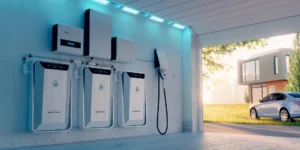
What Is The Expected Lifespan Of Batteries In A Residential Solar System? Overview of Residential Solar Systems Residential solar systems have gained popularity in recent
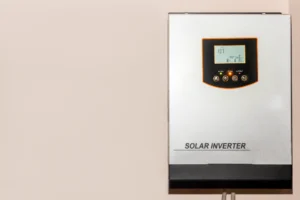
Difference Between String And Microinverters In A Solar Panel System? The world is gradually shifting towards renewable energy sources, with solar panel systems being one
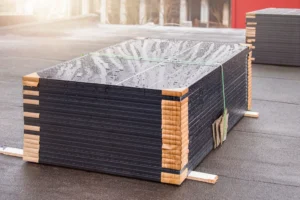
How Do I Choose The Right Solar Panel Manufacturer? As the world becomes more environmentally conscious, many individuals are turning towards solar energy to reduce
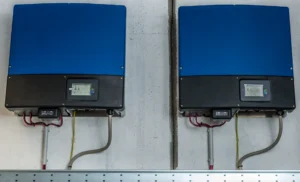
How Do I Choose The Right Inverter For My Solar Panels System? Choosing the right inverter for your solar panel system is a crucial decision
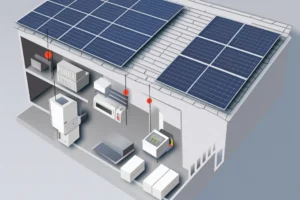
What Kind Of Backup Power Options Are Available With A Solar Panel System? Solar panel systems have become increasingly popular for residential and commercial use
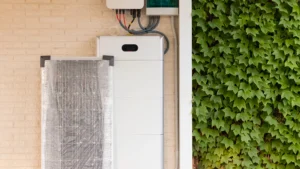
Understanding The Main Components Of A Solar Panel System As concerns about climate change and the environment continue to rise, solar power systems with photovoltaic